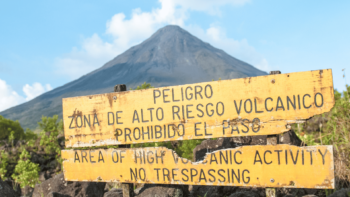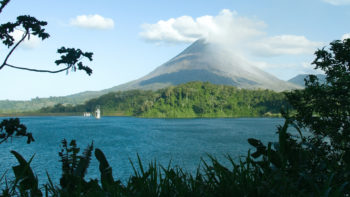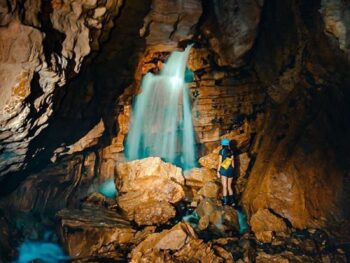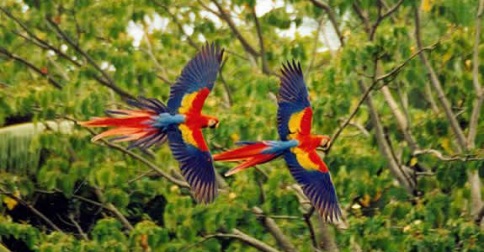
With over 800 species of birds, Costa Rica is a spotter’s paradise, but for the average visitor, these four special species are on anyone’s ‘must-see’ list. To view these or any other bird without a guide, heed these reminders:
- Go out early.
- Be quiet, very quiet.
- Ask at your hotel where staff may have seen these birds.
- Have a decent pair of binoculars and/or camera lens.
This feature is designed with helpful tips on how to see those distinctive feathered creatures that will complete the vacation photo collection.
1. Toucan: The crazy beaks of these birds are colorful and their image abounds on all types of souvenirs. The real thing can be harder to find, but by no means impossible. There are a number of different types of toucans, but the commonly-pictured one is the Chestnut-mandibled — with its black body, yellow chest and brightly-colored huge beak. Although the birds can be found in flocks of around twenty, they’re more usually seen in pairs.
Where: Mostly lowland forests, most common on the Caribbean side and the southern Pacific. National Parks to try: Cahuita, Tortugero, Corcovado, Carara.
Insider tips: Listen for a sound like the opening of a rusty door. That’ll be the toucan call! Follow it to find the bird itself.
2. Hummingbird: There are more than fifty species of hummingbirds in Costa Rica. These fast-moving birds are fascinating to watch as they flit from flower to flower. Their bright colored plumage earns them the name of jewel and they are easy to see, despite how tiny they are — some are as small as two inches! Even though hummingbirds weigh as little as 0.1 of an ounce; they’re willing to fight for their territory and will chirp in frustration at an intruder.
Where: All over the country — whether in a city park or the middle of jungle.
Insider tips: Hummingbirds are attracted to red flowers. Hummingbird feeders are often placed in hotel and restaurant gardens — these are also red and filled with sweetened water. Get comfortable in view of one and enjoy the show!
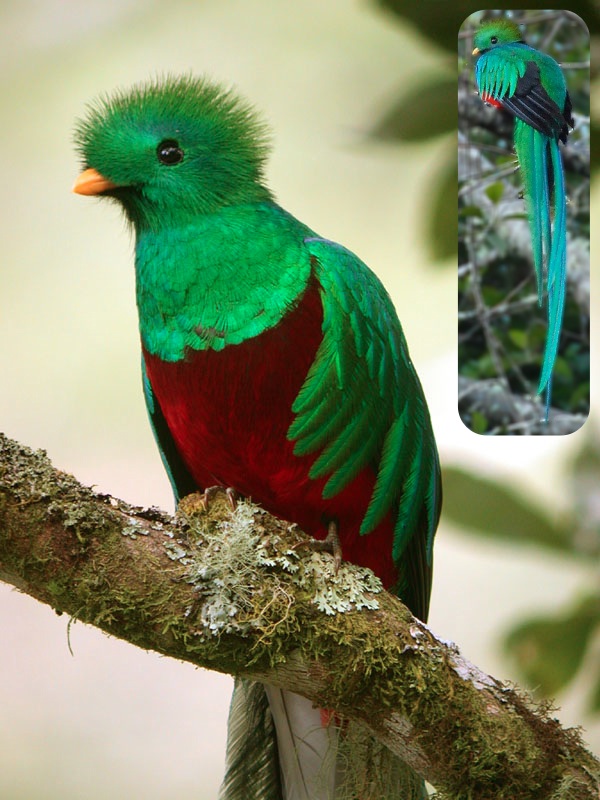
3. Quetzal: These peculiar looking birds are legendary in Central America. The males’ incredible green tail feathers can trail up to three feet behind the bird and earned them the name of quetzille meaning ‘precious beauty’ in the Aztec language. Both the Mayans and Aztecs considered the bird to be sacred. Today, the Queztal is the national bird of Guatemala and also the name of its currency, but the bird is threatened by the destruction of its habitat there. Unlike many bird species that live in flocks, queztales are solitary and very territorial. The male’s plumage is bright green with crimson chest feathers, shorter white tail feathers along with the longer, tell-tale, green tail feathers; while the female’s plumage is not nearly as bold, nor having the trailing tail feathers. No wonder everyone wants to see one!
Where: Highland forests. San Gerardo de Dota, Monteverde, Los Queztales National Park.
Insider tips: This bird is notoriously elusive and a guided tour may be the best way to see it. However, as March and April are their breeding season, these are the best months to see the birds as they are more active and the males are exhibiting their tail feathers.
4. Macaw: A mated pair of Scarlet Macaws epitomizes the picture postcard from Costa Rica. With their bright plumage and distinctive screeching, the birds are a beautiful sight in the wild. Although named for the bright red feathers, the blue and yellow coloring on the birds is just as striking. Once under threat from habitat destruction and capture to be sold as pets, the species is in recovery, due to strong conservation efforts. These monogamous birds are often seen flying with their mate within the flock.
Where: Carara, Corcovado and Palo Verde National Parks are probably the best places in the country to see the birds; however, other places may be new possibilities for macaw habitats.
Insider tips: As the birds are being reintroduced into the wild, the guidebooks are very outdated as to where they can be located. Recent reports suggest that the Dominical and Quepos/Manuel Antonio areas are good spotting sites as well.
Are you planning a twitcher’s getaway to Costa Rica? See how the country is waking up to the idea of specially designed vacations to fit your needs in our birdwatching article.
